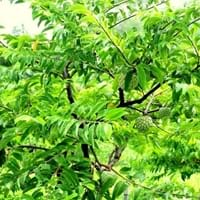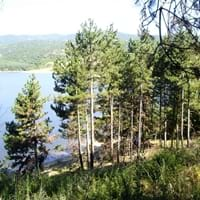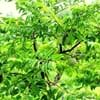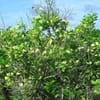Life Span
Perennial
Perennial
Type
Fruit
Needled or Scaled Evergreen
Origin
Caribbean, South America
Eastern Europe, Southern Europe
Types
Pinks Mammoth, African Pride, Late Gold, Geffner, Hilary White
Eastern Austrian Pine, Western Austrian Pine
Habitat
Warm and moist climatic conditions
Wet ground, Wet lands
USDA Hardiness Zone
10-13
4-8
Sunset Zone
Not Available
A3, 2a, 2b, 3a, 3b, 4, 5, 6, 7, 8, 9, 10, 14, 15, 16, 17, 18, 19, 20, 21
Habit
Upright/Erect
Oval or Rounded
Flower Color
Yellow green
Green
Flower Color Modifier
Bicolor
Bicolor
Fruit Color
Light Green, Sea Green
Brown
Leaf Color in Spring
Light Green
Dark Green
Leaf Color in Summer
Light Green
Dark Green
Leaf Color in Fall
Light Green
Dark Green
Leaf Color in Winter
Light Green
Dark Green
Leaf Shape
oblong or narrow-lanceolate
Linear
Plant Season
Summer
Spring, Summer, Fall, Winter
Sunlight
Full Sun, Partial Sun
Full Sun
Growth Rate
Medium
Medium
Type of Soil
Loam, Sand
Loam, Sand
The pH of Soil
Acidic, Neutral, Alkaline
Acidic, Neutral, Alkaline
Soil Drainage
Well drained
Average
Bloom Time
Early Summer, Summer
Summer
Tolerances
Drought
Drought
Where to Plant?
Container
Ground
How to Plant?
Seedlings
Cuttings, Layering
Plant Maintenance
Medium
Medium
Watering Requirements
Do Not over Water, Does not require regular watering
Average Water Needs
In Summer
Lots of watering
Lots of watering
In Spring
Moderate
Moderate
In Winter
Average Water
Average Water
Soil pH
Acidic, Neutral, Alkaline
Acidic, Neutral, Alkaline
Soil Type
Loam, Sand
Loam, Sand
Soil Drainage Capacity
Well drained
Average
Sun Exposure
Full Sun, Partial Sun
Full Sun
Pruning
Prune young trees into an open vase shape
Remove damaged leaves, Remove dead branches, Remove dead leaves
Fertilizers
Nitrogen
All-Purpose Liquid Fertilizer
Pests and Diseases
Anthracnose, Diplodia rot, Leaf spot
Red blotch
Plant Tolerance
Drought
Drought
Flowers
Insignificant
None
Flower Petal Number
Single
Single
Foliage Texture
Medium
Fine
Foliage Sheen
Matte
Not Available
Attracts
Fruit Bats
Birds
Allergy
Oral Allergy
Asthma, Rash, Skin rash
Aesthetic Uses
Not Used For Aesthetic Purpose
Beautification, Cottage Garden, Formal Garden, Used in parkland
Beauty Benefits
Promotes Healthy Hair, Promotes healthy skin
Not Available
Environmental Uses
Air purification
Air purification
Medicinal Uses
Diabetes, Diarrhea
Not Available
Part of Plant Used
Bark, Fruits, Seeds
Tree trunks
Other Uses
Used to make hair tonic, Used to promote healthy blood flow during menstruation
Used as firewood, Used in construction, Used in Furniture, Used in pulpwood and lumber production, Wood is used for making furniture, Wood is used fore making tools, Wood is used in construction, Wood log is used in making fences
Used As Indoor Plant
No
No
Used As Outdoor Plant
Yes
Yes
Garden Design
Fruit / Fruit Tree, Shade Trees, Tropical
Feature Plant, Screening, Wind Break, Shade Trees
Botanical Name
ANNONA squamosa
PINUS nigra
Common Name
Sugar Apple
European Black Pine
In Hindi
सीताफल
Austrian Pine
In German
Zuckerapfel
Schwarzkiefer
In French
Sugar Apple
Pin noir d'Autriche
In Spanish
Manzana de azúcar
pino salgareño
In Greek
ζάχαρη της Apple
Η αυστριακή πεύκα
In Portuguese
Pinha
Pinheiro-larício
In Polish
Cukier Jabłko
Sosna czarna
In Latin
Sugar Apple
Austrian Pine
Phylum
Magnoliophyta
Tracheophyta
Class
Magnoliopsida
Pinopsida
Order
Magnoliales
Pinales
Family
Annonaceae
Pinaceae
Clade
Angiosperms, Magnoliids
Not Available
Tribe
Abreae
Not Available
Subfamily
Maloideae
Not Available
Number of Species
Not Available
Not Available
Season and Care of Sugar Apple and Austrian Pine
Season and care of Sugar Apple and Austrian Pine is important to know. While considering everything about Sugar Apple and Austrian Pine Care, growing season is an essential factor. Sugar Apple season is Summer and Austrian Pine season is Summer. The type of soil for Sugar Apple is Loam, Sand and for Austrian Pine is Loam, Sand while the PH of soil for Sugar Apple is Acidic, Neutral, Alkaline and for Austrian Pine is Acidic, Neutral, Alkaline.
Sugar Apple and Austrian Pine Physical Information
Sugar Apple and Austrian Pine physical information is very important for comparison. Sugar Apple height is 460.00 cm and width 610.00 cm whereas Austrian Pine height is 1,220.00 cm and width 610.00 cm. The color specification of Sugar Apple and Austrian Pine are as follows:
Sugar Apple flower color: Yellow green
Sugar Apple leaf color: Light Green
Austrian Pine flower color: Green
- Austrian Pine leaf color: Dark Green
Care of Sugar Apple and Austrian Pine
Care of Sugar Apple and Austrian Pine include pruning, fertilizers, watering etc. Sugar Apple pruning is done Prune young trees into an open vase shape and Austrian Pine pruning is done Remove damaged leaves, Remove dead branches and Remove dead leaves. In summer Sugar Apple needs Lots of watering and in winter, it needs Average Water. Whereas, in summer Austrian Pine needs Lots of watering and in winter, it needs Average Water.





